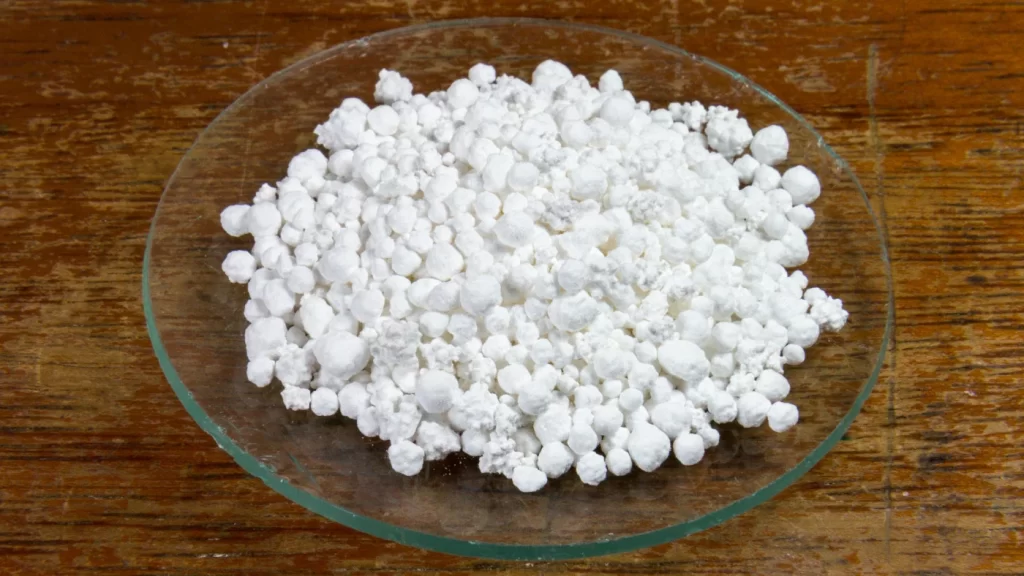
You’d be surprised how much chemical insight can be hidden in just a few grams of a compound.
For instance, what if you were handed 1.5 grams of calcium chloride (CaCl₂) in a lab and asked, “How many moles is this?”
It might sound like a simple question.
But this type of calculation is at the heart of many real-world chemistry problems.
Whether you’re mixing reagents for a reaction or preparing a solution in the lab, knowing how to convert between mass and moles is a fundamental skill.
Let’s break it down.
Step 1: Understand what the question is asking
You’re given a mass of calcium chloride: 1.5 grams.
And you’re being asked to find the number of moles this corresponds to.
That’s a classic mass-to-mole conversion.
The formula for this is:
Moles = Mass ÷ Molar Mass
But before we can use that, we need to determine the molar mass of CaCl₂.
Step 2: Find the molar mass of calcium chloride
To calculate the molar mass of any compound, you sum the atomic masses of all the atoms in its formula.
For CaCl₂, the elements involved are:
- Calcium (Ca): Atomic mass = 40 g/mol
- Chlorine (Cl): Atomic mass = 35.5 g/mol
And since there are two chlorine atoms in calcium chloride, we multiply the atomic mass of chlorine by 2:
Molar Mass of CaCl₂ = 40 + (2 × 35.5) = 40 + 71 = 111 g/mol
So now we know that 1 mole of CaCl₂ weighs 111 grams.
Step 3: Use the mass-to-mole formula
Now apply the formula:
- Moles = Mass ÷ Molar Mass
- Moles = 1.5 g ÷ 111 g/mol
- Moles = 0.01351 mol
Rounded to 3 significant figures, the answer becomes:
0.014 moles of CaCl₂
That’s how much substance is present in just 1.5 grams of this compound.
Step 4: Why this matters more than you think
This tiny quantity may look insignificant.
But in chemistry, especially in solution preparation or titration, such amounts are crucial.
For instance, when preparing buffer solutions or calibrating instruments, knowing the precise mole quantity ensures accurate reactions and avoids contamination or failed experiments.
In medicine, formulations often use small quantities of chemicals.
Even a 0.001 mole error could be the difference between a therapeutic dose and an ineffective one.
So, getting this kind of conversion right is more than just academic.
Step 5: Let’s do a quick double-check
We already know the molar mass is 111 g/mol, and we’re dividing 1.5 grams by this value.
If we reverse it by multiplying:
0.014 moles × 111 g/mol = 1.554 g
That’s almost exactly 1.5 grams, confirming that our calculation is accurate.
Always a good habit to verify your work.
Step 6: Watch out for these common mistakes
One big mistake students make is using the wrong molar mass.
Sometimes they forget to double the chlorine atoms in the formula and mistakenly calculate:
CaCl₂ = 40 + 35.5 = 75.5 g/mol
That’s incorrect.
You must count every atom in the formula.
Another error is rounding too early.
If you round numbers at intermediate steps, you could end up with an answer that’s slightly off.
Only round at the final step unless the question asks otherwise.
Step 7: Applications in industrial and lab settings
Calcium chloride is commonly used in:
- De-icing roads in winter
- Desiccants to keep products dry
- Electrolytes in cement mixtures
- Food processing for firming canned vegetables
Each application depends on specific quantities.
In a pharmaceutical lab, the same 1.5 grams could be used to make a buffer solution or regulate the osmotic pressure in intravenous fluids.
That’s why chemists must be comfortable converting mass into moles—it’s how they speak the quantitative language of chemical reactions.
Step 8: Think visually
Here’s a way to remember it.
Imagine a container of 111 g of CaCl₂.
That’s 1 mole.
Now picture taking just a tiny scoop from it—1.5 grams.
That little scoop contains about 1.4% of a mole, or 0.014 mol.
Visualizing this ratio can help reinforce your understanding of what a mole physically represents.
It’s not just a number—it’s a scale of quantity that anchors real chemical amounts.
Final Wrap-Up
To summarize:
If you’re given 1.5 grams of calcium chloride, and you want to know how many moles that is, here’s what you do.
You calculate the molar mass as 111 g/mol.
You then divide the mass by the molar mass:
1.5 ÷ 111 = 0.014 moles
This is a simple but powerful skill.
It helps you navigate between the physical world of mass and the chemical world of particles.
And that’s the essence of stoichiometry.
If you’re serious about mastering these conversions and solving chemistry questions with confidence, head over to website.
You’ll find practice questions, step-by-step tutorials, and explanations that go beyond memorization to real understanding.
Whether you’re a student aiming for top marks or a teacher looking for resources, CopyChemistry has what you need.
Let’s make stoichiometry your strong point, one question at a time.
